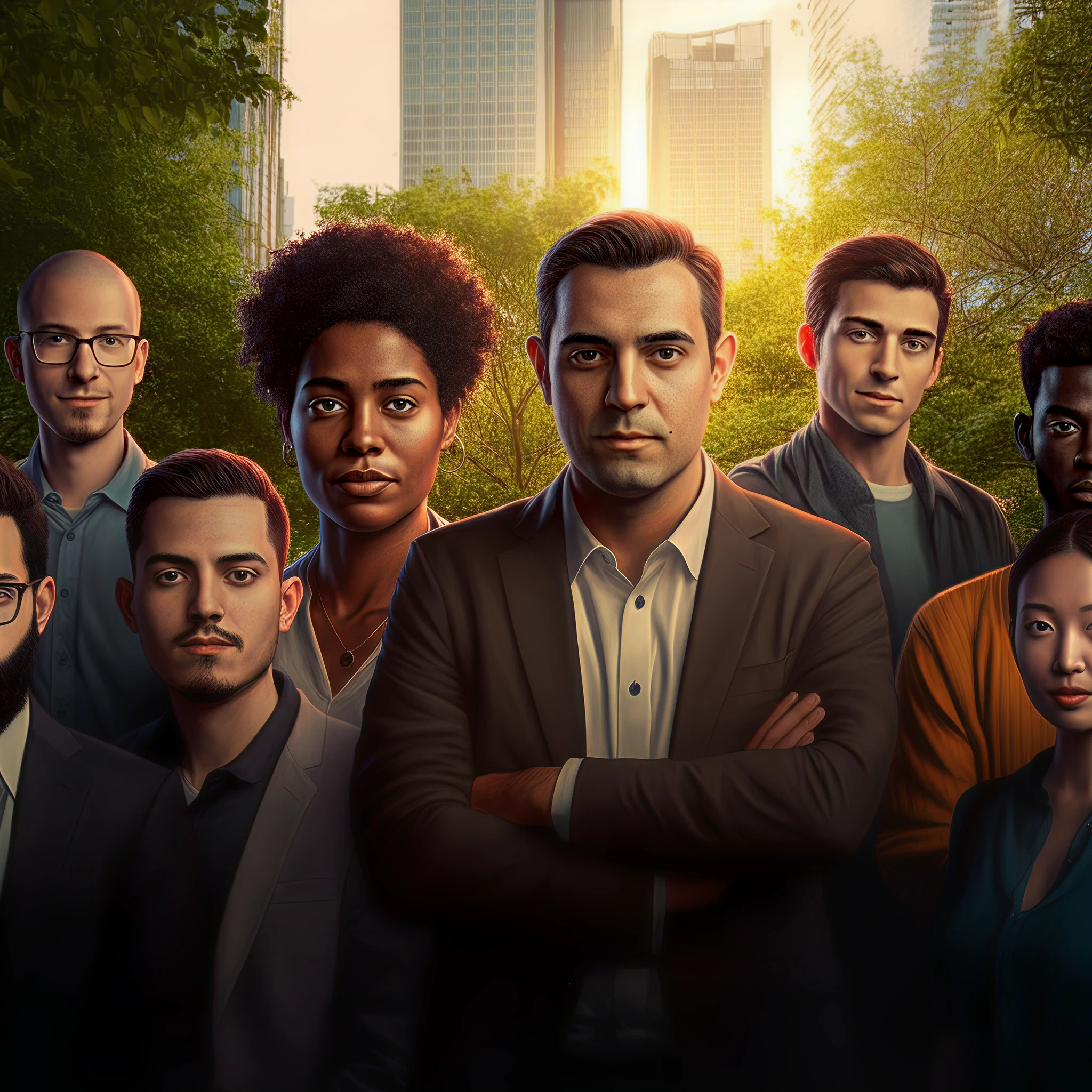The emergence of AI image generation has redefined the way we perceive photography, digital art, and design. Among the most striking advancements is the ability to create hyperrealistic images of people using AI. This capability, while revolutionary, raises significant questions about ethics, trust, and its broader implications in society.
This article unpacks the technology behind AI-generated images of people, explores its many applications, and highlights critical considerations for its use moving forward.
Understanding the Technology Behind AI-Generated Images of People
At the heart of AI image generation are algorithms like Generative Adversarial Networks (GANs). One popular model, StyleGAN, processes vast datasets of human faces to create synthetic images that mimic realistic features. GANs operate with two networks:
- The Generator creates fake images.
- The Discriminator evaluates whether an image is real or AI-generated.
The feedback loop between these two networks pushes the generator to produce increasingly lifelike images. Advanced systems like StyleGAN2, which was featured in a 2022 study (see Additional Context), demonstrate how AI can create faces so realistic that they often appear “more human” than actual photographs.
This brings us into the realm of “hyperrealism.” According to psychological studies, the proportionality and familiarity embedded in AI-generated faces can cause them to feel more “real” than genuine human faces.
Tools for Generating AI Images of People
There are numerous platforms and tools now available to experiment with AI-generated faces:
- NVIDIA StyleGAN
- DeepArt
- This Person Does Not Exist (website)
These tools have both free and premium features, making it accessible for enthusiasts and professionals alike.
Applications of AI-Generated Images
AI-generated images are transforming several industries. Here’s how they’re being used:
1. Art and Design
Artists and designers leverage AI systems to create personalized avatars, virtual influencers, and artistic renderings. Think of this as the next frontier in creative expression, where AI serves as a co-creator.
2. Marketing and Advertising
Brands use AI personas and virtual models in ads to represent diverse audiences, ensuring inclusivity without elevating production costs. AI models are also immune to scheduling conflicts and aging, making them ideal for long-term marketing campaigns.
3. Entertainment and Media
The entertainment industry has begun using AI to recreate historical figures or “de-age” actors in films. AI-generated faces can also populate crowd scenes in movies or games, dramatically reducing production time and costs.
4. Photography and Modeling
AI-generated models are causing disruption in fashion and e-commerce. Companies can now use virtual models for clothing campaigns, with no need for physical shoots.
5. Customer Avatars and User Interfaces
Companies are incorporating AI-generated faces into chatbots and avatars for more human-like interactions in customer service settings, creating an enhanced user experience.
Ethical Concerns and Biases
While the possibilities are exciting, AI-generated images of people raise a host of ethical concerns, as highlighted in a study in Psychological Science (see Additional Context).
Bias in AI Training
Research has revealed that AI models trained primarily on images of white individuals produce hyperrealistic faces that are far more accurate for white people than for people of color. This kind of bias poses risks in areas such as:
- Law enforcement, where AI often plays a role in facial recognition during criminal investigations.
- Representation, as marginalized communities may feel excluded or misrepresented.
Identity Fraud Risks
Synthetic images can lead to the misuse of AI-generated faces for fraudulent purposes, such as creating fake identities or “deepfakes” to spread misinformation.
Erosion of Trust
When AI-generated faces appear indistinguishable from real ones, society risks losing trust in visual media altogether. Transparency in distinguishing AI-generated images from real ones is crucial to maintaining trust.
How Can These Challenges Be Addressed?
Industry leaders and researchers must prioritize eliminating biases in training datasets and advocate for regulations that promote ethical use of this technology. Furthermore, tools to detect AI images, such as the machine learning systems described in the Australian study, will play an essential role in mitigating misuse.
The Future of AI Images of People
AI images present a double-edged sword. While they open new creative horizons in art, business, and entertainment, they simultaneously challenge ethical and social norms. The technology’s rapid evolution means that businesses and individuals alike must remain informed about its latest developments and applications, while advocating for ethical, inclusive approaches.
Are you exploring ways to integrate AI image generation into your work? Share your thoughts or questions in the comments below!








